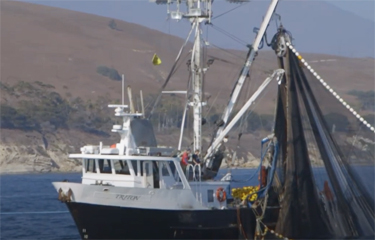The Pacific sardine fishery on the U.S. West Coast appears to be headed for another year of being shut down after a recent National Oceanic and Atmospheric Administration (NOAA) assessment showed a low biomass.
The NOAA assessment estimated the Pacific sardine biomass will be at 27,547 metric tons by the summer – significantly less than the 150,000 metric tons needed to reopen the fishery to commercial fishing. Any fishery at less than 50,000 metric tons is considered to be overfished. The assessment estimates the sardine biomass was around 1.8 million metric tons in 2006.
In response, the Pacific Fishery Management Council has approved an annual catch target of 4,000 metric tons for all uses this year, a move which comes at a time the fishery has been suspended for five years due to overfishing concerns. The council relied on reports from its own scientific and statistical committee, its coastal pelagic species management team, and the public.
While the council heard testimony from environmental advocates who believe the stock has dwindled to a level that cannot sustain a commercial fishery, fishermen believe that the NOAA stock assessment neglects to account for the inshore sardine biomass which is not recorded by federal radar surveys because the research ships don’t operate in such shallow waters.
According to California Wetfish Producers Association Executive Director Diane Pleschner-Steele, the migration of sardines inshore became pronounced five years ago – the same year the fishery was last active – due to changing ocean conditions. The California Wetfish Producers Association has hired helicopter pilots to capture aerial photographs of the biomass to show the abundance of the species inshore, and its fishermen have reported seeing large schools of sardines.
“The big problem is NOAA’s acoustic surveys aren’t seeing the fish and we are. But we’re not allowed to fish. If the stock assessment was accurate, sardines would not be declared overfished,” Pleschner-Steele told SeafoodSource. “The stock assessments haven’t included any biological composition data so none of the young fish that we’re seeing have been introduced into the model and the model continues to predict that there’s no recruitment.”
Marc Gorelnik, vice chair of the Pacific Fishery Management Council, told SeafoodSource the council had listened to the association’s argument, and agreed more accurate data could help the council make a more informed decision on the eventual reopening of the sardine fishery.
"One thing everyone agrees on is the need to improve the sardine stock assessment," Gorelnik said.
Pleschner-Steele said that the majority of the 4,000-metric-ton catch will be used by the live-bait fishery, which is entitled to target sardines. However, the association has also proposed a research project that would use some 700 metric tons of the 4,000 for sampling to help better determine the age of the stock. The research project has not yet been approved.
“We will have designated vessels enabled to go out once or twice a month and actually catch a school of sardines. The Department [of Fish and Wildlife] will be at the docks to do the sampling. That’s the age data that we need so that we can update the age data in the [NOAA] model,” Pleschner-Steele said. “They’ll have another update [of the model] at the end of this year and our hope is that they will have the age data they need to recognize that we have pretty substantial recruitment."
Pleschner-Steele said the situation has echoes of previous crises in the U.S. West Coast sardine fishery.
“In California, sardines are the foundation of our historic wetfish industry, which has endured for more than a century. Veteran fishermen who lived through the last sardine recovery in the early 1990s see ironic parallels today, with sardines abundant on the fishing grounds but the fishery closed because government stock assessment surveys didn’t see the fish,” Pleschner-Steele said.
Last year, an assessment on the Pacific sardine by NOAA Fisheries showed the stock remained low enough to be classified by the agency as overfished. In response, non-governmental organizations including Oceana have pushed for the council to create a rebuilding plan.
“We’ve been urging for an overhaul to the way sardine are managed for the last seven years,” Oceana California Campaign Director Geoff Shester told SeafoodSource in April 2019. “It is critical to hold fishery managers accountable for exacerbating this modern-day sardine collapse and seek management changes to use best available science to learn from our mistakes.”
Fishermen and managers are also at odds over the definition of the California sardine stocks, where fish found in ocean temperatures are identified as a southern stock extending from waters off Mexico, according to National Fisherman. If the northern sardine stock assessment was reflective of sardine abundance reported by fishermen in year-round waters the species would not be considered overfish, the wetfish group said.
Pleschner-Steele said her organization would abide by the decision of the council, but that it believed the designation of the fishery as overfished was flawed as the data used in the decision is not accurately counting inshore sardines.
“The end goal of the California Wetfish Producers Association is to be allowed to target sardines under closely controlled circumstances,” she said. “We’re thankful that the fishermen’s testimony seemed to resonate with the council … Our main focus now is collaborating with state and federal fishery managers to document the abundance of sardines inshore of federal acoustic surveys. Our research is the key to the future.”
Photo courtesy of California Wetfish Producers Association







